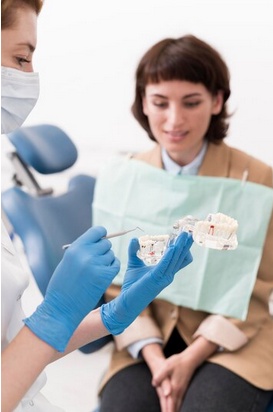Introduction:
A beautiful smile is often a reflection of healthy teeth and strong supporting bone structure. However, tooth loss due to decay, trauma, or other dental issues can result in the loss of surrounding bone, leading to compromised oral health and aesthetics. In such cases, bone grafting for teeth emerges as a crucial procedure to rebuild and restore the damaged bone, providing a foundation for successful dental implantation. This comprehensive guide explores the various aspects of bone grafting for teeth, shedding light on its procedures, benefits, and overall significance in reconstructive dentistry.
Understanding Bone Grafting for Teeth:
-
What is Bone Grafting?
Bone grafting is a surgical procedure that involves the transplantation of bone tissue to repair and regenerate damaged or lost bone. In the context of dental health, bone grafting is commonly employed to restore the bone structure in the jaw, especially in areas where tooth loss has occurred.
-
Why is Bone Grafting Necessary for Teeth?
Tooth loss can lead to the resorption of the surrounding jawbone, creating an insufficient foundation for dental implants. Bone grafting becomes essential to augment the bone volume and density, ensuring proper stability and support for implants. Without a solid bone foundation, dental implants may not integrate successfully, compromising their longevity and effectiveness.
Bone Grafting Procedures:
-
Autografts:
Autografts involve the transplantation of bone from one part of the patient's body (usually the hip or jaw) to the affected site in the mouth. This method is considered highly effective as it utilizes the patient's own bone, minimizing the risk of rejection.
-
Allografts:
Allografts use donor bone from another individual, which is carefully processed and sterilized before transplantation. While this method eliminates the need for a second surgical site, the risk of immune response is slightly higher compared to autografts.
-
Xenografts:
Xenografts involve the use of bone material sourced from animals, typically bovine or porcine. This material is also processed and sterilized before transplantation. Xenografts provide an alternative for patients who may not be suitable candidates for autografts or allografts.
-
Synthetic Grafts:
Synthetic grafts use man-made materials, such as hydroxyapatite or bioactive glass, to stimulate bone regeneration. While synthetic grafts eliminate the need for donor sites, their effectiveness may vary, and they are often used in combination with other grafting materials.
Benefits of Bone Grafting for Teeth:
-
Improved Implant Success:
The primary benefit of bone grafting for teeth is the enhanced success rate of dental implants. A well-augmented jawbone provides a stable and secure foundation for implants, increasing the likelihood of successful integration and long-term stability.
-
Preservation of Facial Structure:
Tooth loss can lead to a loss of jawbone volume, impacting facial aesthetics and causing a sunken appearance. Bone grafting helps preserve the natural contours of the face by preventing further bone resorption.
-
Enhanced Chewing Functionality:
A strong and healthy jawbone ensures improved chewing functionality, allowing individuals to enjoy a varied diet without restrictions. This can significantly enhance overall quality of life and nutritional intake.
-
Prevention of Complications:
Bone grafting minimizes the risk of complications associated with dental implants, such as implant failure, shifting, or misalignment. A well-prepared bone site ensures the stability and longevity of the implant, reducing the likelihood of future issues.
Conclusion:
In conclusion, bone grafting for teeth plays a pivotal role in reconstructive dentistry, offering a comprehensive solution to the challenges posed by tooth loss and compromised bone structure. Whether through autografts, allografts, xenografts, or synthetic grafts, the goal remains the same – to rebuild smiles and restore oral health. The benefits extend beyond mere aesthetics, encompassing improved implant success, preservation of facial structure, enhanced chewing functionality, and prevention of complications.
As advancements in dental technology continue, bone grafting for teeth is poised to become even more refined and patient-specific. With the potential to transform the lives of individuals suffering from tooth loss, this procedure stands as a testament to the continuous evolution of dentistry in its quest to provide optimal oral health and overall well-being. Embracing the possibilities offered by bone grafting ensures that smiles can be rebuilt, not just aesthetically but functionally, contributing to a healthier and more confident life.


No comments yet